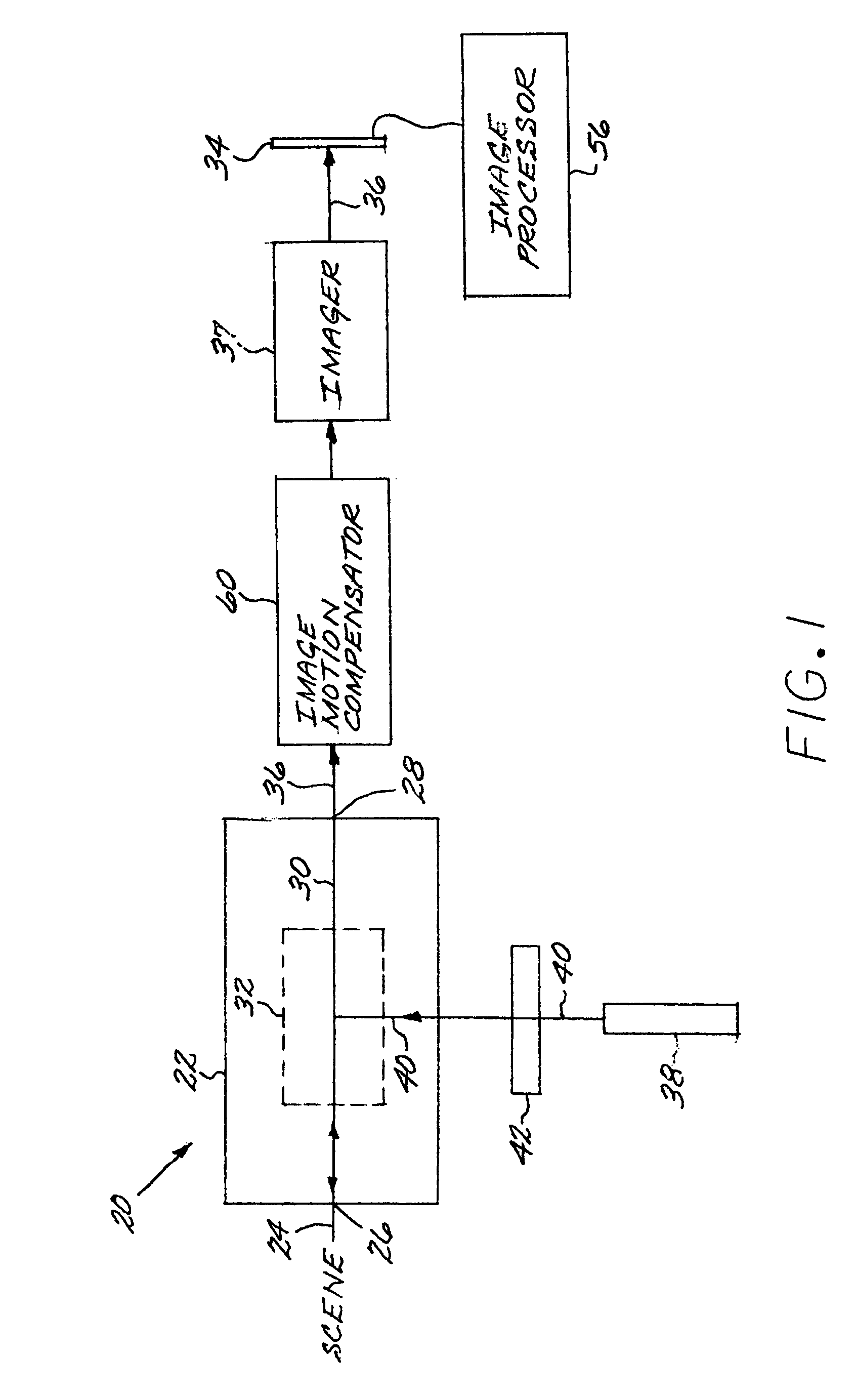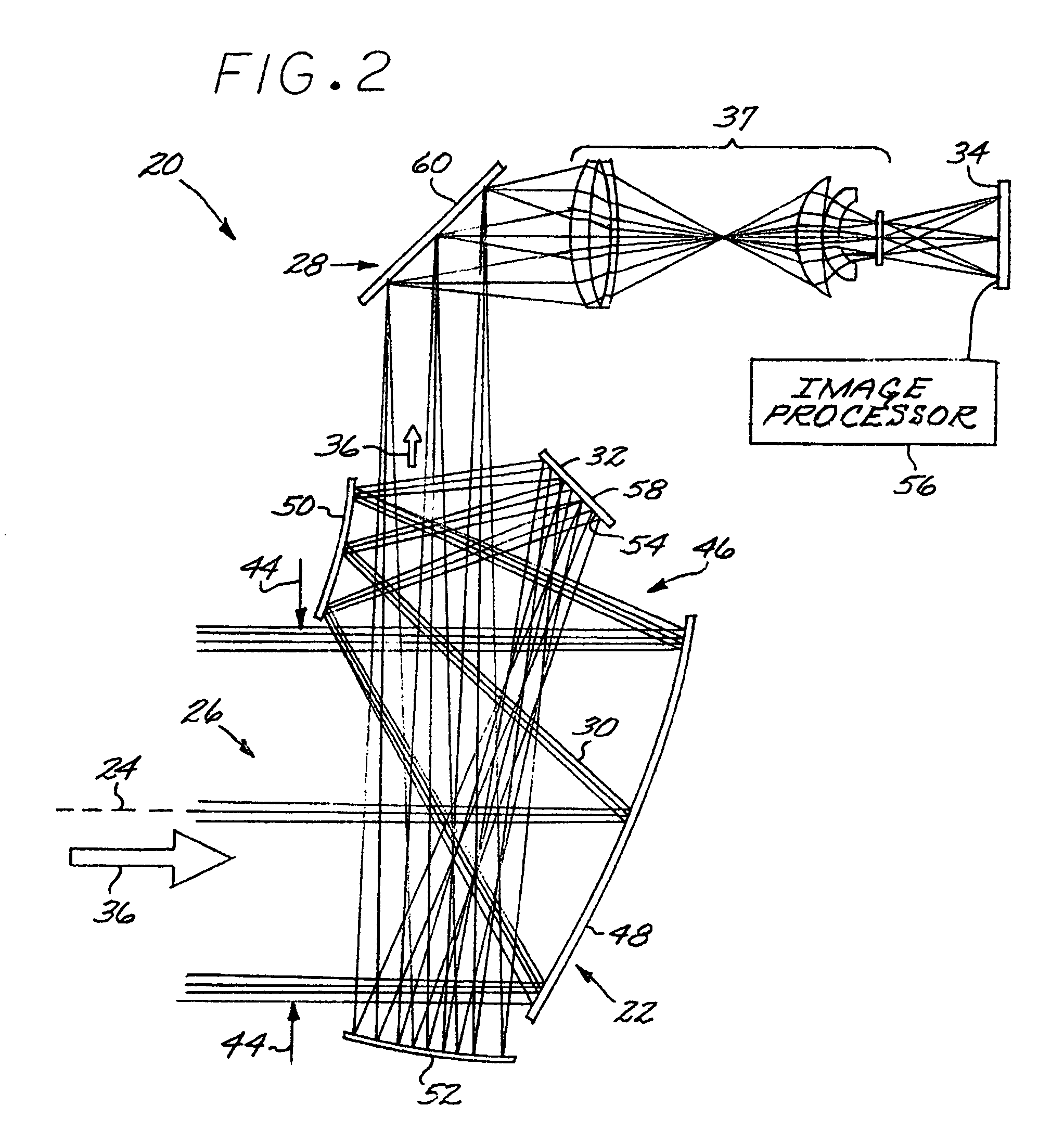Common-aperture optical system incorporating a light sensor and a light source
a technology of light sensor and light source, which is applied in the field of common aperture optical system incorporating a light sensor and a light source, can solve the problems of difficulty in combining the optics of the two applications into a single telescope, difficulty in aligning and paralleling the boresights of these two separate telescopes, and affecting the accuracy of the image, so as to avoid misalignment and lighten the weight
- Summary
- Abstract
- Description
- Claims
- Application Information
AI Technical Summary
Benefits of technology
Problems solved by technology
Method used
Image
Examples
Embodiment Construction
[0017]FIG. 1 depicts in block-diagram form a preferred form of a common-aperture optical system 20. The common-aperture optical system 20 includes a reflective telescope 22 having a common boresight 24, an entrance pupil 26 of the reflective telescope 22, an exit pupil 28 of the reflective telescope 22, and a beam path 30 extending from the entrance pupil 26 to and beyond the exit pupil 28. A beam splitter 32 intersects the beam path 30 so that the beam path 30 is incident upon the beam splitter 32. A light sensor 34, preferably an imaging light sensor 34, is positioned to receive an input light beam 36 traveling along the beam path 30 after the beam path 30 intersects the beam splitter 32 and passes the exit pupil 28 of the reflective telescope 22. The output of the light sensor 34 is provided to an image processor 56. Preferably but not necessarily, an image motion compensator 60 is placed at or near the exit pupil 28 in the collimated beam space before the input light beam 36 rea...
PUM
 Login to View More
Login to View More Abstract
Description
Claims
Application Information
 Login to View More
Login to View More - R&D
- Intellectual Property
- Life Sciences
- Materials
- Tech Scout
- Unparalleled Data Quality
- Higher Quality Content
- 60% Fewer Hallucinations
Browse by: Latest US Patents, China's latest patents, Technical Efficacy Thesaurus, Application Domain, Technology Topic, Popular Technical Reports.
© 2025 PatSnap. All rights reserved.Legal|Privacy policy|Modern Slavery Act Transparency Statement|Sitemap|About US| Contact US: help@patsnap.com



